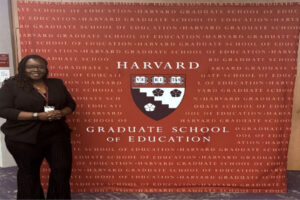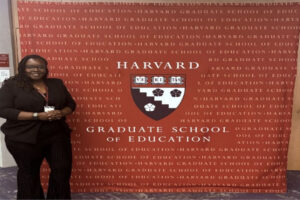Pinch me: The nonprofit group Protect Our Parks was back in court this week attempting to keep the Obama Presidential Center out of Jackson Park.
POP’s attorneys are asking for a preliminary injunction to prevent roadwork, tree-clearing, and other “groundbreaking” activity scheduled to begin as soon as next month.
The situation is urgent, they say, “Because these groundbreaking activities will cause permanent and irreparable harm.”
In a Groundhog Day scenario, this is playing out in the same court where they began arguing against the Jackson Park site in 2018, before the same federal district judge, John Robert Blakey.
Judge Blakey dismissed their lawsuit in 2019, and when POP appealed that decision, a judicial panel that included soon-to-be-Supreme Court Justice Amy Coney Barrett threw their case out of federal court, citing a lack of standing. By the federal court’s more stringent (than state court) standards, the plaintiffs would have to show specific personal injury, Barrett wrote. This could be hard to do if, for example, the plaintiffs didn’t live on the south side, and were not frequent users of the park.
But that was then.
“This is a whole new ballgame,” legal scholar, professor (NYU; University of Chicago emeritus), and POP attorney Richard A. Epstein says about the motion for injunction and a new federal lawsuit, filed in April.
What’s different? The list of plaintiffs, for one thing: Protect Our Parks has been joined by a half-dozen new plaintiffs, all bona fide south-siders. They include the Nichols Park Advisory Council; author, critic, and University of Chicago professor W.J.T. Mitchell; and journalist Jamie Kalven.
You read that right: the widely respected human rights activist and investigative reporter responsible for bringing the Laquan McDonald video to light is among those suing in hopes of getting the OPC to pick a different south-side location.
The list of defendants has also grown, expanding from the city of Chicago and the Chicago Park District, to include former presidential candidate Pete Buttigieg, in his current role as secretary of transportation, along with top administrators from the Department of the Interior, Federal Highway Administration, National Park Service, and Army Corps of Engineers, along with the Obama Foundation itself.
POP attorneys Epstein and cocounsel Michael Rachlis want to block any OPC construction activity until the new lawsuit, which seeks a redo of federal reviews that ostensibly cleared the way for a groundbreaking, is resolved.
According to POP, the federal reviews had two fundamental flaws: first, they treated the OPC itself as a local matter, outside their purview (separating it from the roadwork it’ll necessitate); and then they failed in their duty to consider alternatives to the Jackson Park site that could be less harmful.
POP is also relodging the complaint that was at the heart of its original lawsuit, charging (as they described it in a statement issued when they filed) that by “giving away nearly 20 prime acres of publicly-owned green space to a private entity for $10,” the city has “engaged in a breach of its public trust obligations.”
Not sure what the city’s public trust obligations are? No worries: in a stroke of great timing, just as this murky courtroom contest gears up again, a new history of Chicago’s lakefront that illuminates the legal issues and puts them in deep context has arrived. Lakefront: Public Trust and Private Rights in Chicago, published in May by Cornell University Press, is the culmination of a 20-year labor of love by two other eminent legal scholars with Chicago roots: Marquette University Law School dean Joseph D. Kearney and Columbia University professor Thomas W. Merrill.
In a phone interview last week Merrill said his interest in Chicago’s uniquely clear and spectacular lakefront goes back to a property class in his law school days at the University of Chicago in the 1970s. “I had a professor who liked to tell stories; he spent three classes on the Chicago lakefront.” Merrill said he was “mesmerized” by those stories, but confused, and when he started looking into it himself a few years later, he got hooked: “It was like a big jigsaw puzzle. I ran into Joe [Kearney; both were then at the Sidley Austin law firm] and mentioned this project and he was very enthusiastic. So we started doing the research. That was 22 years ago. It became a sort of summer project—coming back to Chicago, digging into the archives, piecing it together bit by bit.”
Their book—destined to be a go-to text for Chicago history courses—reaches back to the city’s origins as a potential port. It covers Aaron Montgomery Ward’s obsession with protecting his (and others’) lakefront views; George Wellington Streeter’s squatter tactics on the former lake bed that became Streeterville; the astounding reversal of the Chicago River; and the bargains made with riparian owners to build Lake Shore Drive. It begins with an account of how the smoky, sooty, noisy, and opportunistic Illinois Central Railroad managed to dominate the downtown lakefront for more than a century.
When the city was new, Lake Michigan lapped up much closer to Michigan Avenue than it does now. Downtown buildings regularly flooded; a breakwater was urgently needed. The city couldn’t afford this massive project, but the Illinois Central could. In return, in an agreement made in 1852, the railroad got the right to build its tracks (with a 300-foot right of way) along the shore from 22nd Street to 12th, continuing from there to Randolph Street on a trestle to be built in the lake itself. Then, in 1869, in spite of vociferous public protest, the IC wrangled passage of a state law that gave it ownership of “over a thousand acres” of land stretching a mile into the lake, where it planned to build a large outer harbor.
The state legislature repealed this very unpopular “giveaway” four years later, leading to a legal battle that ended with an 1892 U.S. Supreme Court ruling that submerged (or formerly submerged) land is held by the state in trust for public use, and that the government cannot abdicate general control of it.
The public trust doctrine has been invoked to keep the U.S. Steel South Works plant from expanding into Lake Michigan (in 1973), and to prevent Loyola University from doing the same for an arguably more worthy project (in the 1980s). It was also the main legal weapon in the case that stymied the Lucas Museum long enough for George Lucas to give up on Chicago. Merrill says that since the latter 20th century, there’s been a reinterpretation of the doctrine, attempting to apply it not only to submerged or formerly submerged land, but to “any transfer of public resources to private uses.” Ergo, POP’s employment of the public trust in the OPC case, although (Merrill says) the Jackson Park site doesn’t qualify as formerly underwater.
In documents filed with the court last week, the Obama Foundation says an injunction that delays the Center will increase costs by “at least $2.2 million per month,” and will likely have a negative impact on fundraising. According to the same documents, the fundraisers have a long way to go: the foundation has so far raised “over $200 million in donations and pledges for the center’s development,” but will need $700 million. v







